Intro: How Many Ounces Are in A Wine bottle?
Knowing how many ounces are in a wine bottle will help you enjoy the best wine, whether you’re an expert or a novice.
Knowing how many ounces are in a wine bottle will help you decide whether or not to buy a specific wine. When purchasing wine, there are many things to take into consideration.
When arranging a party or ordering by the bottle at a restaurant, it’s helpful to have a basic awareness regarding a wine bottle’s volume in ounces.
Any regular wine bottle can contain nearly 25 ounces. This amount is also the standard pour size in most restaurants.
Several factors affect how many glasses are in a wine bottle. These include the bottle’s size, the type of wine, and the type of pour. The pour size depends on what kind of wine is served and its environment.
The standard wine bottle size is 750 ml, which is the same as 1.5 pints. It is also the same as the standard measure of a bottle of beer. However, the actual size of a beer bottle is usually less than the standard measure.
One regular-sized wine bottle (capacity 750 ml) equals two 12-ounce soda cans. Alternatively, it is also equivalent to three eight-ounce glasses of wine.
Wine Bottle Sizes
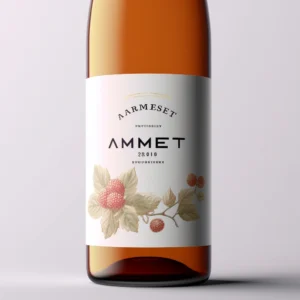
Whether you’re planning a party or have a wine bottle in your cupboard, you may wonder, “how much liquid this wine bottle contains?”
A regular wine bottle usually has the capacity of holding 25 ounces of liquid.
The amount of wine inside depends on the wine type and the bottle size. So while the standard wine bottle holds enough wine to drink two glasses, the answer to “how many wine glasses are there in a wine bottle?” depends on how much wine you will pour.
For example, if you use a standard wine glass, you can only pour about 25.4 ounces.
Wine Bottles and Their Various Types
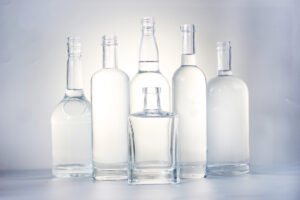
Generally, wine bottles are shaped differently. However, most wine producers use five primary shapes.
These include –
- Bordeaux style
- Alsace bottle
- Burgundy bottle
- Standard bottle
The traditional glassblowing methods found in different regions influence these shapes.
Bordeaux Style Bottle
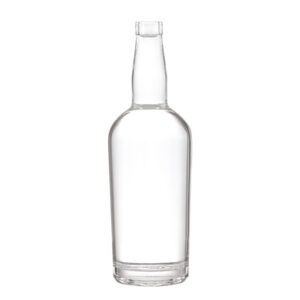
1. Straight sides combined with high shoulders are a sign of these bottles.
2. It is the most common bottle type.
3. As the name suggests, wines like Merlot or Sauvignon Blanc are kept in this style of bottle.
Burgundy Bottle
1. Burgundy wine bottles have sloping shoulders.
2. These are commonly used for Grenache or Pinot Noir wines.
Alsace Bottle
1. Alsace bottles are usually thinner and smoother in the body than Bordeaux bottles.
2. These bottles are also called hock bottles.
3. They come in different colors, including amber, blue, and green.
4. They are usually used for colored designs.
Standard Bottles
1. The standard wine bottle is 750 ml.
2. There are also Half Bottles, Quarter Bottles, Piccolos, and Splits.
3. They are named based on their shape. It may also include their size.
4. A Half, Demi, or Split Bottle is 375 ml.
Finding Large or Alternative Bottle Formats

Buying wine in a larger format may be something you have yet to consider, but it could be a good option. You’ll find these larger bottles more durable and can age better, which means your wine will last longer.
Often, fine wines are sold in magnums, but the majority of wine sales are still in standard-sized bottles.
The standard uniform wine bottle holds 25.4 ounces. This is a good size for parties and storing wine but could also be better for aging wine.
Your wine stays fresh when you consume it within a few days. Wine loses its fruitiness and prime attributes if the bottles remain open over a prolonged period.
Choosing the right bottle size is one of many factors in aging wine, but it’s also a good idea to store it properly. The best wines are made with care.
So to retain its best qualities, wine should be stored in a cool, dark place.
Smaller wine bottles may not be as common as some other wine packaging options, but they are a good choice for those looking for something portable.
What Is a Serving Size of Wine?
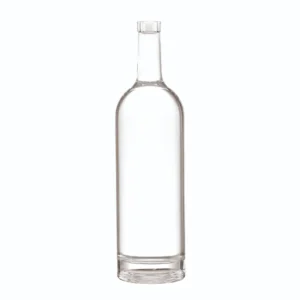
The right serving size of wine is essential to avoid consuming too much. Too much alcohol harms your health and can lead to liver and pancreatic diseases, diabetes, and certain cancers.
A maximum amount of 1 drink for women and two for men per day is advised by the Dietary Guidelines for Americans.
However, the Dietary Guidelines for Americans also recommend that alcohol consumption in moderation can have some health benefits.
Wine serving sizes vary depending on the variety of wine and the amount of alcohol in it. For instance,
- The average serving size of a bottle of wine is around four glasses.
- The standard wine glass holds 5 ounces.
- If you drink a dessert wine, you should drink only two ounces.
- During a dinner party, an average wine serving size is 175 ml.
- If you are serving red wine, you may want to serve it in a smaller glass.
There is no ideal serving size for wine, but the Dietary Guidelines for Americans recommend a minimum of 5 fluid ounces per serving.
In case you are unsure how much alcohol your wine contains, use the Alcohol by Volume (ABV) calculator.
A standard red wine glass can hold around 5 ounces. However, the glass size depends on how much alcohol that wine contains. For instance, a glass of Port is usually served in a 75-ml glass of about 2.5 ounces.
Serve white wine in a sizable bowl if it is a full-bodied variety. This allows for a better experience, as the big bowl will show off its acidity and aroma.
There are also specialty chains that sell smaller bottles of wine. These smaller bottles help you to avoid waste and allow you to pour the wine into smaller servings. You can also buy smaller bottles in your local grocery store.
The US Department of Agriculture has recommended that you drink moderate amounts of alcohol. Usually, these recommendations include two glasses of wine for men, and one glass for women. In addition, you should only drink wine if you like the taste of it.
A small amount of wine can be good for you, but it’s important to drink in moderation. A large amount of wine can harm your health and lead to unintentional injury.
Serving size is also essential if you are trying to lose weight. Larger servings can increase the calories in your diet.
You may also have more trouble swirling the wine.
The pour should be about five ounces, and you shouldn’t pour more than half of the glass.
When you are pouring, note where the water lands in the glass. You can then calculate how much you’ll need for the taste test.
Knowing How Many Ounces are in a Wine bottle is Useful.
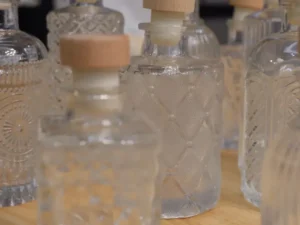
Whether preparing for a party or ordering by the bottle at a restaurant, knowing how many ounces are in a bottle is helpful. You can avoid ordering something you can’t drink or even run out of wine!
The best way to determine how many ounces are in a wine bottle is to look at the size. The standard wine bottle measures 750 ml or 25.4 fluid ounces. This means that the bottle holds about five five-ounce glasses of wine.
Normally, one gall of red wine glass holds a good amount of wine. However, the glass size depends on what type of wine is served. The alcohol content also affects the glass size.
A typical flight of wine consists of 4-6 different wines. Depending on the type of wine and the serving style, these glasses might hold anywhere from one to five fluid ounces.
A more formal set-up will offer five fluid ounces per glass.
Wine Aging In Different Sizes of Bottles

Whether you’re a wine enthusiast or want to try a few new varieties, it’s crucial to understand how wines age in different bottle sizes.
The difference in the amount of oxygen inside the bottle can affect how quickly it develops.
The larger the bottle size, the more liquid you mix with oxygen. This helps the wine to develop more slowly and develop more complex nuances.
Smaller bottle sizes have less air inside them and thus contain less oxygen. This helps prevent oxidation. In addition, the darker the bottle, the more UV protection it offers.
Besides the size of the bottle, other factors affect how the wine ages.
Aside from the volume of wine inside the bottle, the aging process also depends on the storage conditions and the rate at which oxygen can interact with the wine.
Can You Easily Find Small or Large Wine Bottles?
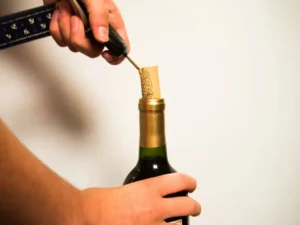
Getting the right bottle size is vital for anyone who drinks wine. Whether purchasing for a party or just enjoying a bottle yourself, you want to get the right size.
- Wine bottles come in various sizes, but normally, a wine bottle can hold 750 milliliters. That’s about enough wine to enjoy five glasses.
- If you want a smaller bottle, look for a demi or half-wine bottle.
- A demi or half bottle holds about 375 milliliters or half the amount of a standard wine bottle.
- If you need more wine, you can also buy a larger bottle. You can buy a magnum, or a double magnum, twice the size of a standard bottle.
The magnum is a bottle that holds about 50 ounces of wine. It is also sometimes called a Champagne bottle.
These larger wine bottles are also incredible decorations when they’re empty. You can turn them into a candle holder or a vase. Alternatively, you can turn a wine bottle into a lamp.
Conclusion
Depending on the type of wine, you may have questions about a wine bottle containing the number of ounces. Some bottles are more significant than others.
If you’re planning a dinner party or other get-together, getting more than one bottle is a good idea.
The standard wine bottle measures 750 milliliters. A 750 mL bottle has a volume that is equal to 2.5 US cups. This is a pretty accurate measurement.
The standard wine glass holds about five ounces. Commonly, one normal wine pour has around 120 calories. Consider also looking into wine glasses that are bigger than eight ounces.
Unfortunately, these glasses are only sometimes as common as smaller sizes.
The best way to tell how many ounces are in a standard wine bottle is to compare it to a comparable size bottle of soda. For example, two 12-ounce soda cans fill a normal bottle.
